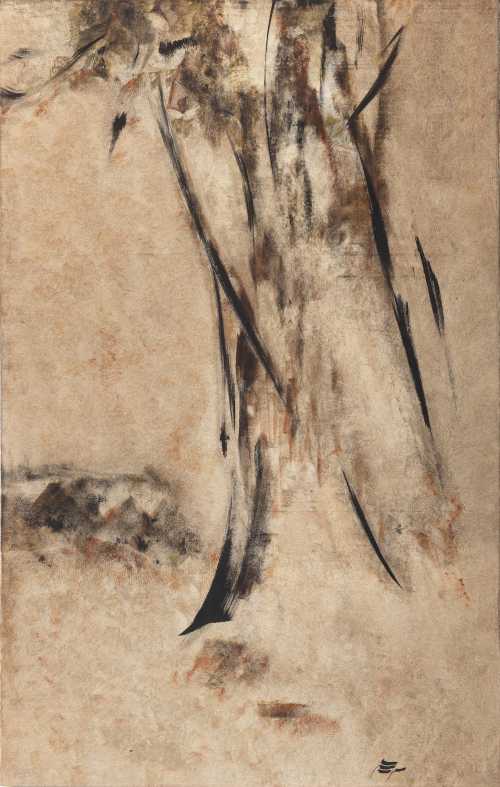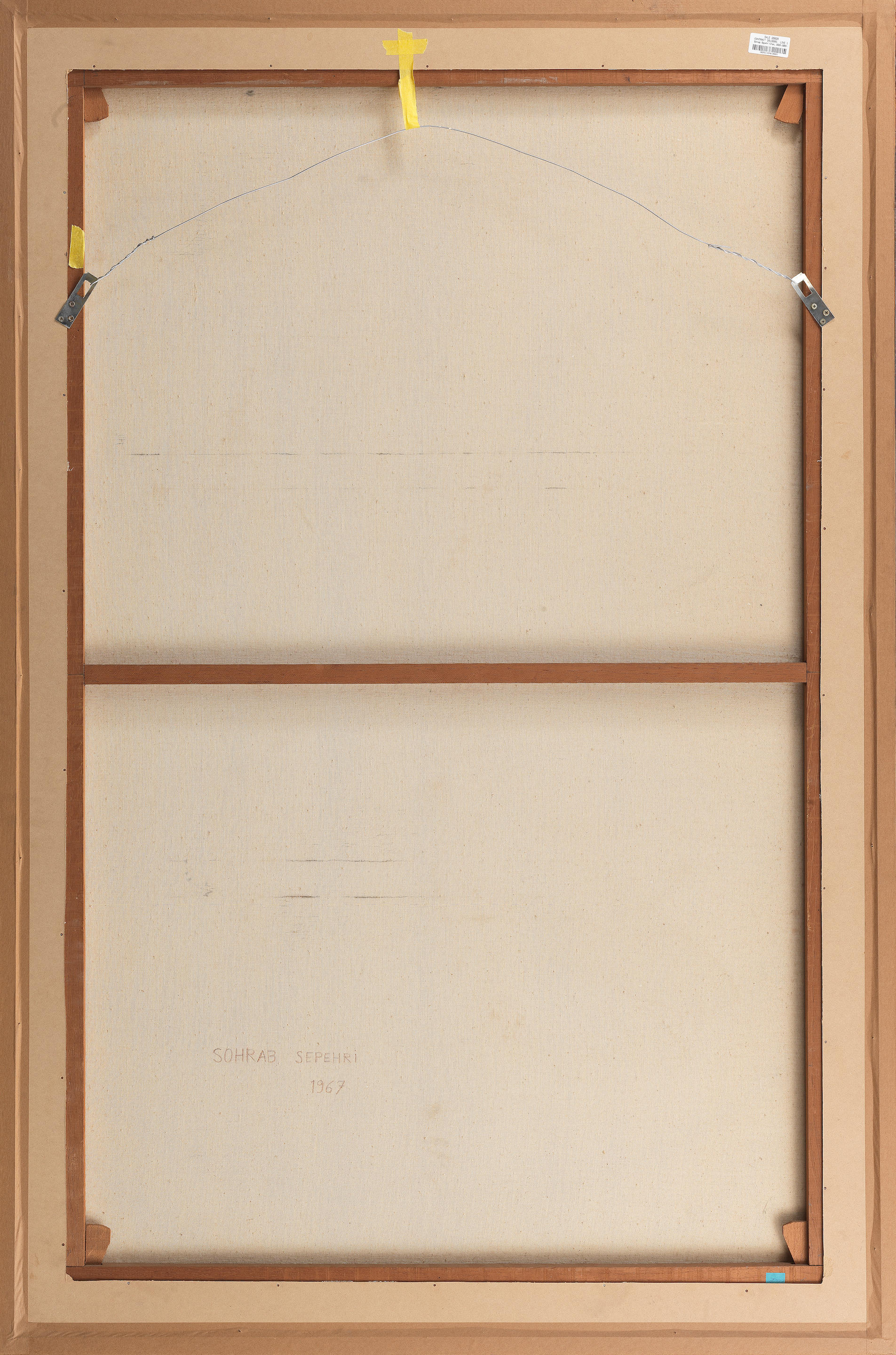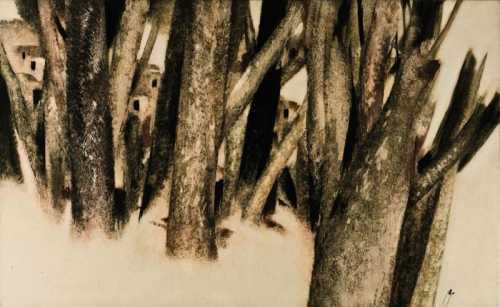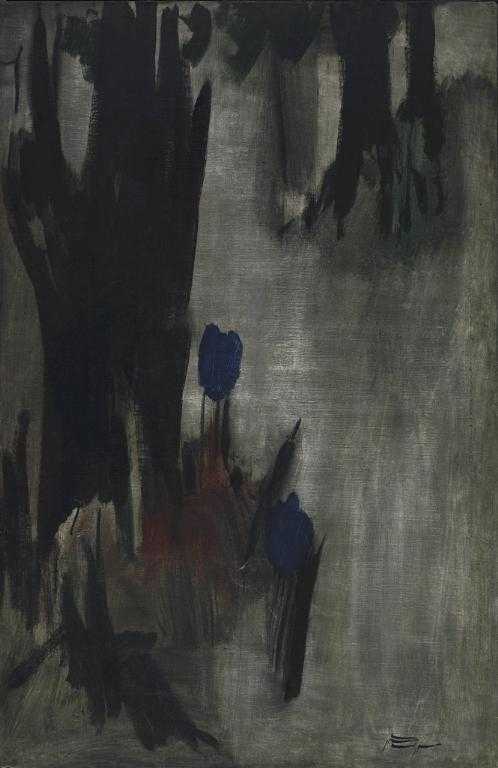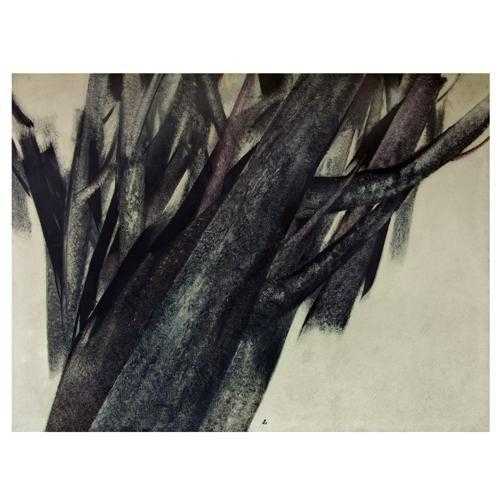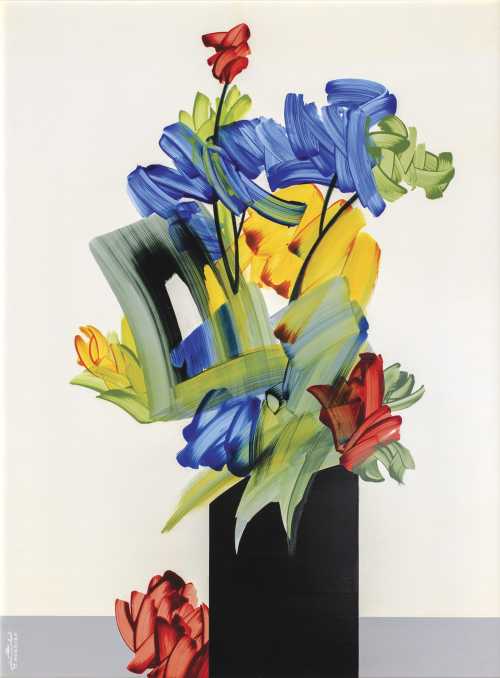- Untitled (From the Tree Series) 1967
- Oil on canvas
- Painting
- 100 * 155 cm
- Signed in Farsi (lower right), signed and dated "1967" on the verso, executed in 1967
Framed
17 November 2021
Estimation
£70,000
96,485 USD
-
£100,000
137,836 USD
Realized Price
£89,000
122,674 USD
4.706%
Artwork Description
"I have never known two poplars to be enemies
I have never witnessed a willow selling its shade to the ground
The elm tree freely bestows its branch to the crow
-and wherever there is a leaf- my passion blossoms likes a bush -
bathing me in the joy of existence"
- Sohrab Sepehri
The present lot is an exceptional example from Sohrab Sepehri's celebrated Tree Series. Executed in the late 1960's, the depiction of Trees, for Sepehri, represented an escape from the harsh urban environment that he found so oppressive and melancholic, longing for a return to the verdant pastures of his native Kashan.
Sepehri's strong representational impulse propelled by a love of the natural landscape of his native of Kashan and the near monastic technical discipline honed from his study and mastery of Eastern painting techniques. Poet, artist and intellectual, Sepehri's mild manner and withdrawn persona belied the richness of expression manifest in his works. Enraptured by nature, Sepehri had a deep and profound attachment to the topography of his native Kashan, the "oasis city" where trees and vegetation sprung amidst the arid desert. The genesis of Sepehri's work was firmly rooted in this landscape, and he often bemoaned the long periods of absence from Kashan he had to endure when exhibiting and working abroad.
Sepeheri had a firm belief in the inherent grace and nobility of the nature he so admired. Inspired by Eastern traditions, with which he had direct contact during travels in India and Japan, Sepehri came to see the purity of the natural world as an antidote to the corruption of the human condition. Removed from the sphere of urban tumult, an unblemished natural world exhibited order, harmony and simplicity.
Sepehri's focus however, fell on perhaps nature's most visually striking and symbolically potent inhabitant; the tree. Monolithic, life-exuding, and perpetual, the tree is both the ultimate example of the force of nature, and its symbolic focal point, harbouring all four elements of life; soil within its roots, water within its ducts, expelling life giving oxygen and providing the fuel for fire, its form and significance gripped Sepehri's creative faculties.
Sepehri's choice in depicting this singular archetype of nature derives from his belief in the beauty of the concise. Zen tradition encourages the shedding of excess and the absence of the superfluous, to this end Sepehri depicts only trunks, for he was no realist, and was concerned more with the meaning of a tree, its aesthetic essence, than construing its actual physical occurrence in a specified landscape.
Combined with this, he employs a limited palette, consisting of coloured grays and dark greens. The limiting of colour to an absolute minimum is a conscious exercise in terseness, echoing the formal restraints of the Zen haiku which are limited to seventeen syllables, and reflecting Sepehri's belief that economy in colour resulted in greater artistic lucidity. Despite this terse palette, Sepehri manages to faithfully capture the texture, complexity and light and dark tonal variations between his tree trunks, delineating gracefully where trunks and branches engage, interlope and separate.
Ultimately, for Sepehri, the depiction of a tree was a meditative endeavour, in the Japanese tradition of "hitsuzendo", an attempt at creative self-reflection. Unlike Western traditions where the artist uses his faculties to fashion a work into existence, the Zen painting tradition holds that the "man the art and the work are all one".
Flawlessly executed, the present work is not only superlative in its composition but stems from one of the most creatively fertile years in Sepehri's career, when the artist had no fewer than four major solo exhibitions in Paris, new York and Tehran. Archetypal, exemplary and sublime, the present painting is a work that is truly deserving of the title, "best of breed"
I have never witnessed a willow selling its shade to the ground
The elm tree freely bestows its branch to the crow
-and wherever there is a leaf- my passion blossoms likes a bush -
bathing me in the joy of existence"
- Sohrab Sepehri
The present lot is an exceptional example from Sohrab Sepehri's celebrated Tree Series. Executed in the late 1960's, the depiction of Trees, for Sepehri, represented an escape from the harsh urban environment that he found so oppressive and melancholic, longing for a return to the verdant pastures of his native Kashan.
Sepehri's strong representational impulse propelled by a love of the natural landscape of his native of Kashan and the near monastic technical discipline honed from his study and mastery of Eastern painting techniques. Poet, artist and intellectual, Sepehri's mild manner and withdrawn persona belied the richness of expression manifest in his works. Enraptured by nature, Sepehri had a deep and profound attachment to the topography of his native Kashan, the "oasis city" where trees and vegetation sprung amidst the arid desert. The genesis of Sepehri's work was firmly rooted in this landscape, and he often bemoaned the long periods of absence from Kashan he had to endure when exhibiting and working abroad.
Sepeheri had a firm belief in the inherent grace and nobility of the nature he so admired. Inspired by Eastern traditions, with which he had direct contact during travels in India and Japan, Sepehri came to see the purity of the natural world as an antidote to the corruption of the human condition. Removed from the sphere of urban tumult, an unblemished natural world exhibited order, harmony and simplicity.
Sepehri's focus however, fell on perhaps nature's most visually striking and symbolically potent inhabitant; the tree. Monolithic, life-exuding, and perpetual, the tree is both the ultimate example of the force of nature, and its symbolic focal point, harbouring all four elements of life; soil within its roots, water within its ducts, expelling life giving oxygen and providing the fuel for fire, its form and significance gripped Sepehri's creative faculties.
Sepehri's choice in depicting this singular archetype of nature derives from his belief in the beauty of the concise. Zen tradition encourages the shedding of excess and the absence of the superfluous, to this end Sepehri depicts only trunks, for he was no realist, and was concerned more with the meaning of a tree, its aesthetic essence, than construing its actual physical occurrence in a specified landscape.
Combined with this, he employs a limited palette, consisting of coloured grays and dark greens. The limiting of colour to an absolute minimum is a conscious exercise in terseness, echoing the formal restraints of the Zen haiku which are limited to seventeen syllables, and reflecting Sepehri's belief that economy in colour resulted in greater artistic lucidity. Despite this terse palette, Sepehri manages to faithfully capture the texture, complexity and light and dark tonal variations between his tree trunks, delineating gracefully where trunks and branches engage, interlope and separate.
Ultimately, for Sepehri, the depiction of a tree was a meditative endeavour, in the Japanese tradition of "hitsuzendo", an attempt at creative self-reflection. Unlike Western traditions where the artist uses his faculties to fashion a work into existence, the Zen painting tradition holds that the "man the art and the work are all one".
Flawlessly executed, the present work is not only superlative in its composition but stems from one of the most creatively fertile years in Sepehri's career, when the artist had no fewer than four major solo exhibitions in Paris, new York and Tehran. Archetypal, exemplary and sublime, the present painting is a work that is truly deserving of the title, "best of breed"
Realized Price
185,657 USD
Min Estimate
117,493 USD
Max Estimate
160,432 USD
Average Artwork Worth
+103.46%
Average Growth of Artwork Worth
Sales Performance Against Estimates
Average & Median Sold Lot Value
2021 - 2025
Performance vs. Estimate
2021 - 2025
Sell-through Rate
2021 - 2025
Similar Artworks
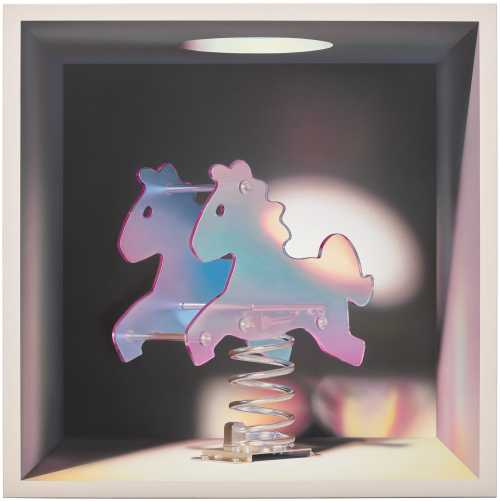
Untitled
Estimation
£50,000
67,568 USD
-
£70,000
94,595 USD
Realized Price
£96,750
130,743 USD
61.25%
Sale Date
Phillips Auction
-
3 December 2025
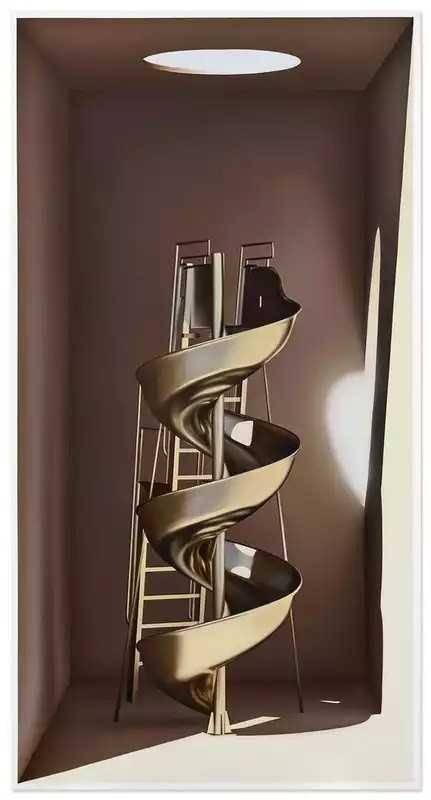
The Invention of Solitude
Estimation
HK$50,000
6,428 USD
-
HK$1,000,000
128,553 USD
Realized Price
HK$889,000
114,284 USD
69.333%
Sell at
Sale Date
Sotheby's
-
30 March 2025
